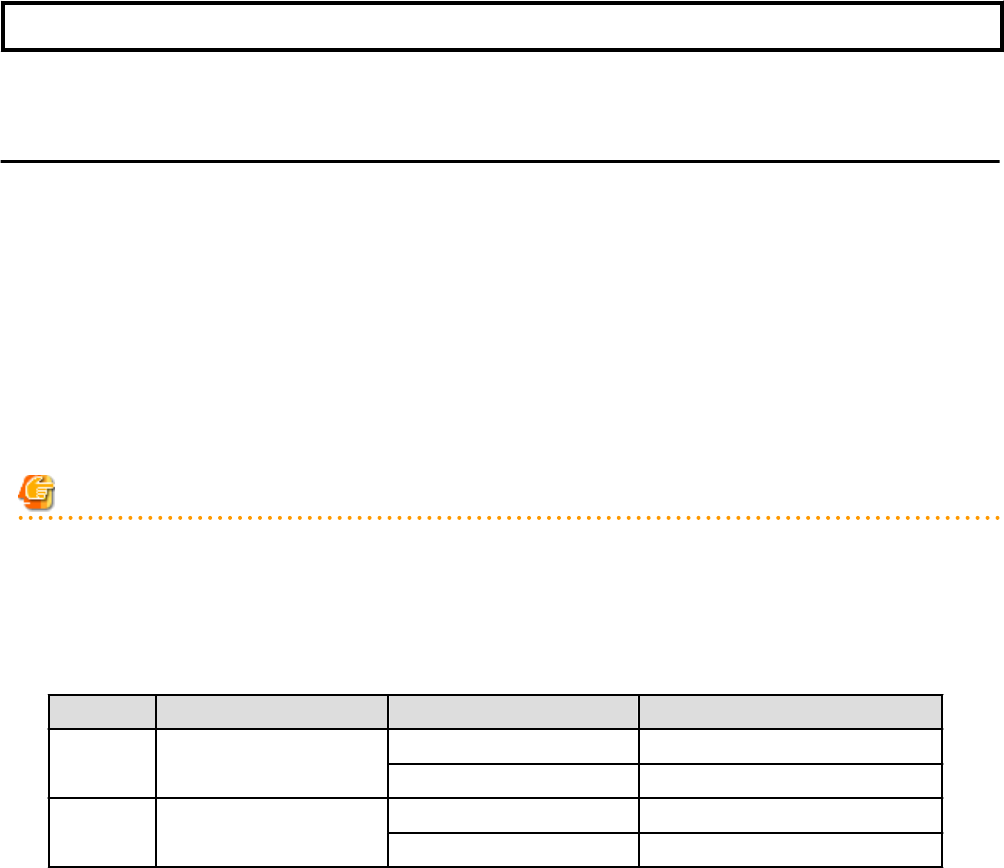
Chapter 16 Backup and Restore
This chapter explains how to use the backup and restore functions provided in Resource Orchestrator.
16.1 Overview
The backup and restore functions allow the backup and restoration of system images from physical OSs or VM hosts.
The system image backup and restore function enables back up of images of physical OSs and VM hosts over the network, and stores
them on a disk on the admin server.
A system image backup can be used for the following purposes.
- Software maintenance
A system image backup can be created as a precautionary measure before performing maintenance tasks such as applying patches,
installing, or modifying installed software.
- Hardware maintenance
A system image backup can be used to guard against hardware problems such as disk failures.
Note
- Regardless of the boot environment (local/SAN/iSCSI) and RAID configurations, only the contents of the first disk (boot disk)
recognized by the managed server's BIOS can be backed up and restored.
The contents of other disks (data disks) cannot be backed up and restored. To properly backup and restore such data disks, it is
recommended to use dedicated backup software, or the copy functions available in storage devices.
When the first disk contains multiple partitions (Windows drive, Linux/VMware partition), all partitions are backed up.
Table 16.1 Examples of system image backup and restore targets
Disk Windows Disk Name Windows Drive Name Target of Backup and Restore
First Disk 0
C: Yes
E: Yes
Second Disk 1
D: No
F: No
- As managed servers are restarted during backup and restore operations, their applications should be stopped beforehand.
- Restore operations can only be performed for the servers from which a backup has been collected.
- The first partition must be the boot partition.
- The operations for backup and restore of VM hosts differ depending on the server virtualization software used.
For an explanation of the behavior differences that occur when VM guests are included in the VM host's boot disk, refer to "D.3
Functional Differences between Products" in the "Design Guide VE".
If VM guests on the boot disk are not to be backed up (and restored), VM guest files should be moved to another disk.
- To preserve the configuration of the server virtualization software used, VM guests should be backed up at the same time as VM hosts.
During backup, because the target VM host will be automatically set to VM maintenance mode, the VM host should be in a state that
allows VM maintenance mode to be set.
When backing up a VM host in a high-availability configuration, all VM guests stored on shared disks should be migrated to another
VM host beforehand.
After backing up the VM host, migrate the VM guests back to their original VM host.
Refer to the server virtualization software manual and "D.3 Functional Differences between Products" in the "Design Guide VE" for
information on how to back up and migrate VM guests, or about the VM maintenance mode.
- To preserve the configuration of the server virtualization software used, VM guests backed up at the time of the VM host's backup
should also be restored when restoring a VM host. Note that this is not required if no changes likely to alter the virtualization software
configuration were made (e.g. changes such as addition or deletion of a VM guest, or changing the placeholder for VM guest definition
- 115 -


















